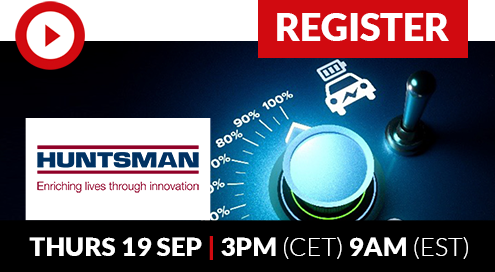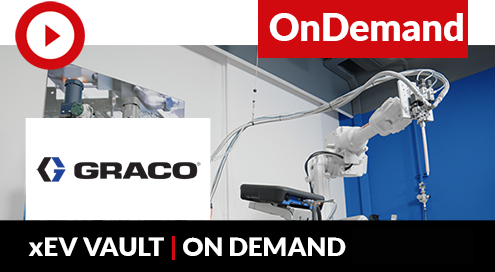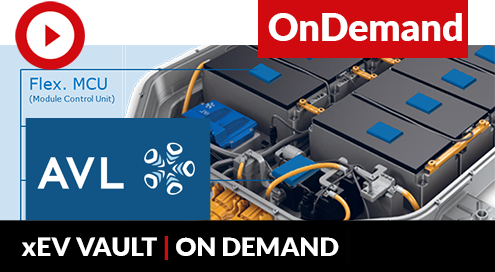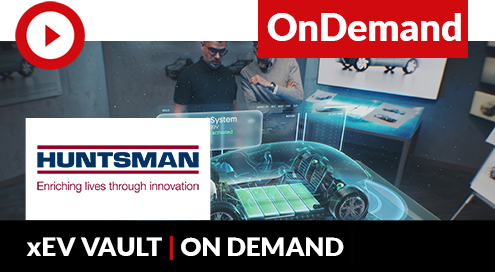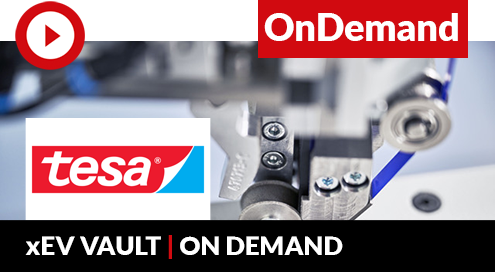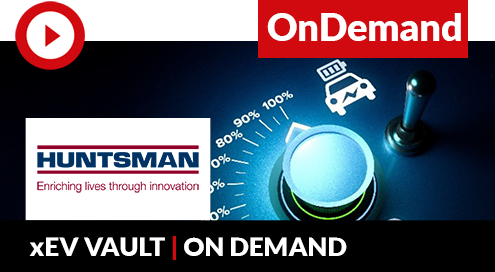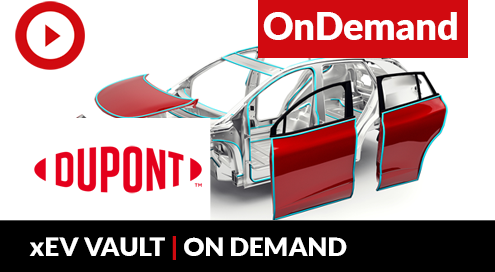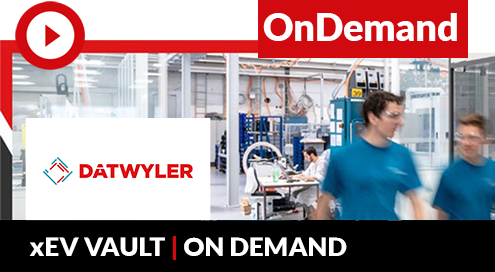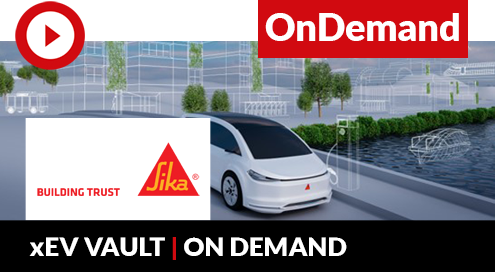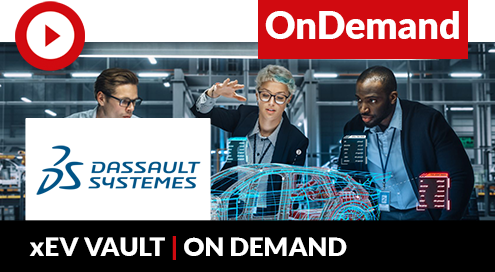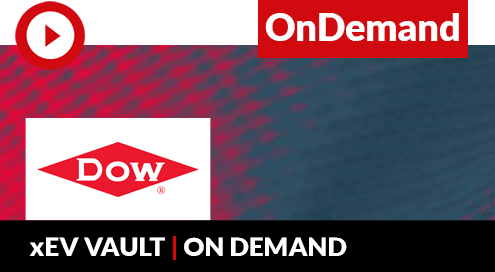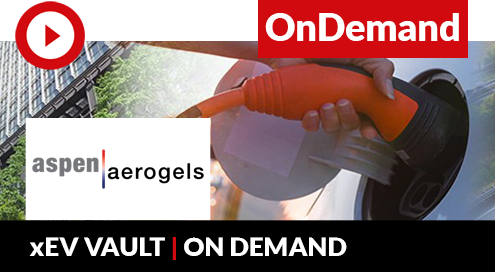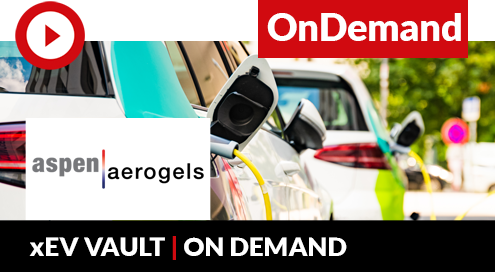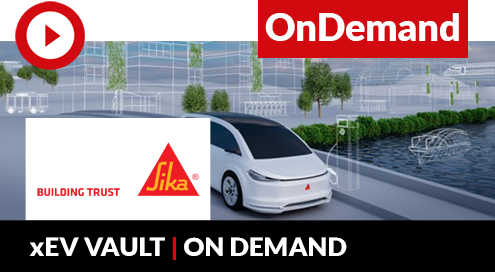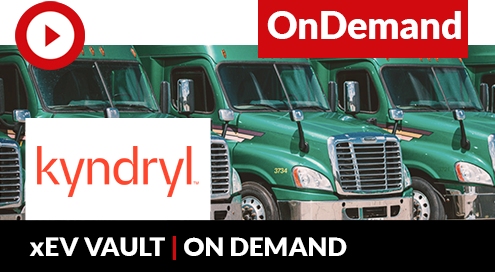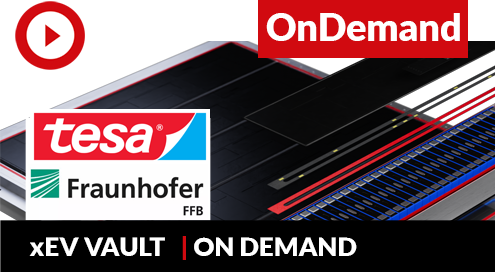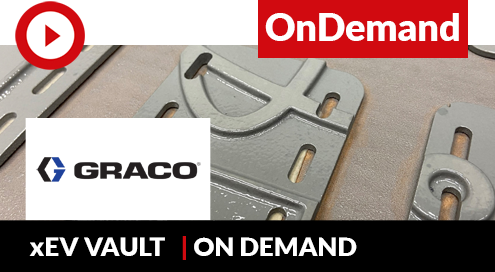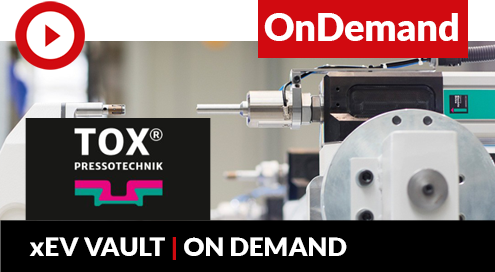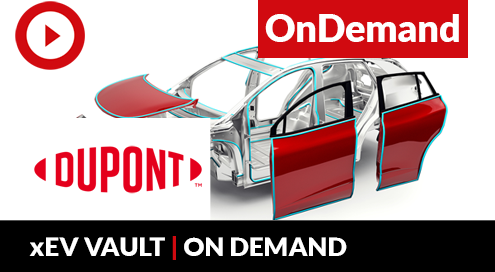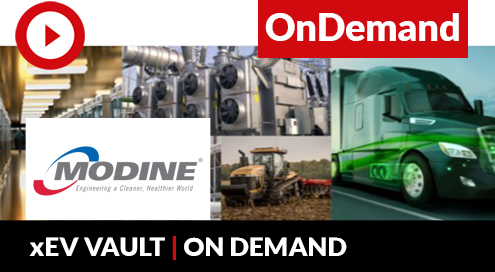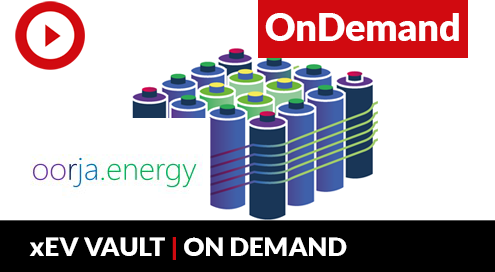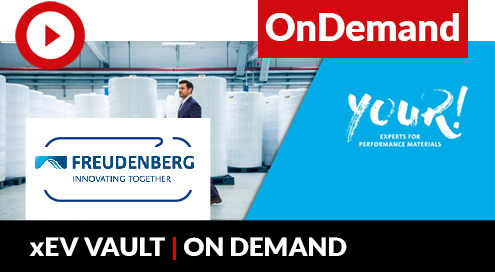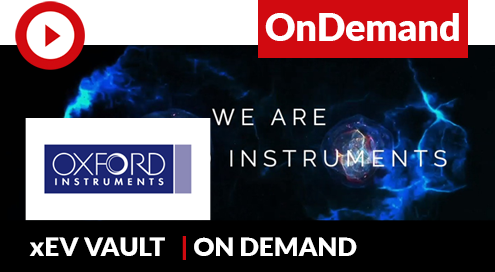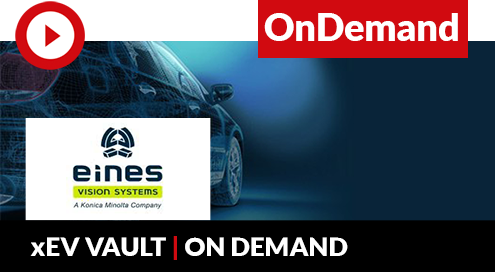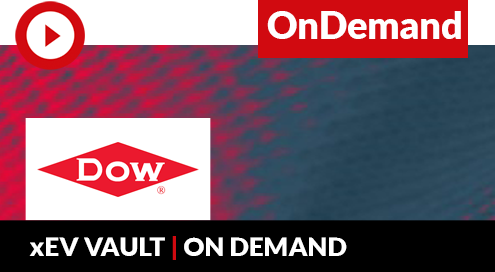
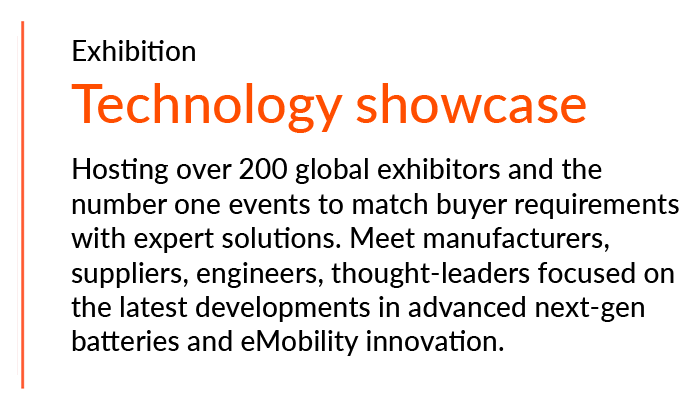

UPCOMING EVENTS
WeAutomotive Group Delivers Unique, High-Value, Content-Lead Technical Agendas And Networking Forums For The Electric Vehicle Sector
WeAutomotive Group specialize in the meticulous research and conceptualization of premier business conferences and information products, strategically engineered to provide unparalleled value to the industries and communities we serve. Our events stand as the foremost gathering of industry leaders, and our partners represent the most innovative technology and solution providers serving the international OEM community.
Recognizing the discerning expectations of our clients, we are committed to delivering tangible benefits through our meticulously curated events and webinars. Our reputation is rooted in the consistent delivery of transformative business insights, positioning us as a recognized leader in providing profound and actionable industry knowledge.
Informed by comprehensive consultation and research with industry leaders, WeAutomotive Group’s highly focused agendas are designed to addressthe key and critical concerns of each industry sector whilst delivering unparalleled value through practical, actionable, technical insights. This meticulous approach underscores our commitment to excellence and ensures that our events consistently attract top-tier attendees looking for cutting-edge industry knowledge, professional collaboration, take-away practical solutions, the latest technologies, and content that directly addresses key and current challenges.
Designed for busy professionals, ourevents and webinars are designed to maximize your time and investment, offering condensed and impactful technical sessions without the unnecessary fluff!
Never has there been a more exciting time to be part of the automotive industry; the rule book and conventionality have been thrown out of the window to make way for a tidal wave of innovation, diversity, and new opportunity. Electrification, technology innovation, new shapes, new spaces and new boundaries, are now synonymous across the sector globally as automotive engineering encompasses a broader definition than ever before.
Following the success of last year’s annual conferences and exhibitions, as well as new launch events in eVTOL, Smart Manufacturing and Battery Recycling, 2024 promises to be a dynamic and thrilling year for WeAutomotive Group as our flagship events grow, and our array of xEV Conferences & Exhibitions undergo further expansion and diversification.
Whilst our conferences and exhibitions have seen exponential growth, increasing in sponsors, exhibitors, and attendees –WeAutomotive’sTechTalk webinars have alsocontinued to engage global audiences of pre-qualified decision makers from their offices, homes and during their travels.
The TechTalkseries consist of live, content-driven, topic-specific weeks of individually hosted webinars. We have not only seen a growing number of live attendees and on-demand downloads, but have also consistently grown our client base of suppliers and technology providers; delivering now over2000 sponsored webinars across a broad range of BEV topics. The continued success of these webinars demonstrates a space and appetite in the market for both online and in-person delivered content – working coherently together to support and strengthen the success of each activity for both end-users, and suppliers.
WeAutomotive Group takes immense pride in firmly establishing itself as market leaders, delivering an unrivalled and unparalleled offering in this dynamic space, so buckle up for an electrifying journey as we continue to redefine the automotive landscape in 2024.
We look forward to welcoming everyone to our shows this year, where the automotive future takes center stage!
 Featured BEV TECHTALKS 2024
Featured BEV TECHTALKS 2024
Improving Circularity & Reducing The Carbon Footprint Of Automotive Foams & Composites
Irina Bolshakova , Global Automotive Marketing Director, Huntsman Polyurethanes
Diane Langer, Global Technology and Innovation Director, Huntsman Polyurethanes
Guest Speaker
Changes In Coolant Legislation: Drivers And Timelines For Compliance
Sander Clerick , Development Chemist E-Mobility, Arteco Coolants
Guillaume Vanpeteghem , E-Mobility lead, Arteco Coolants
Find out more
-
Low Electrical Conductive Water-Glycol Cooling As A Solution to Safety-Driven Coolant Legislation Changes
-
Understand the evolving regulatory landscape governing coolant use in automotive applications
-
Navigating complex and varying international regulations to ensure compliance while maintaining performance standards
-
Analyze the impact of coolant legislation changes on the design and functionality of battery cooling systems for global Original Equipment Manufacturers (OEMs)
-
Adapting to new regulatory requirements without compromising the efficiency, safety, and longevity of battery systems
-
Explore the broader implications of coolant legislation on OEMs and aftermarket suppliers, including supply chain adjustments and product offerings
-
Balancing compliance with cost-effectiveness and market competitiveness in both OEM and aftermarket sectors
-
Delve into the specific properties of water-glycol based coolants that offer low electrical conductivity and their implementation in modern cooling systems
-
Integrating advanced coolant solutions that meet regulatory standards and enhance performance in electric vehicle battery systems
 Latest OnDemand BEV TECHTALKS
Latest OnDemand BEV TECHTALKS
Minimizing Risks In EV Battery Manufacturing With Advanced Dispensing Technologies
Robert Delgado, Global Market Strategist, E-Mobility and Electronics, Graco
Find out more
Advanced materials and new technologies are being developed faster than ever before to overcome the challenges in EV battery. Although much progress has been made to date, EV battery manufacturing is still faced with hurdles to overcome in order to increase safety, reduce costs and improve supply chain.
In this webinar, you will find out how leading global EV automakers are successfully leveraging new dispense technologies and application “know-how” to minimize adoption risks and increase ROI in EV battery manufacturing.
Advancing BMS Calibration With Faster, Cost-Effective Battery Simulation Models
Thomas Glatz, Technical Specialist Simulation, AVL
Jonathan Rhodes, Technical Specialist Systems and Controls, AVL
Speaker Biography | Company Profile
Find out more
Innovative battery cell technologies require a tailored Battery Management System (BMS) to monitor, evaluate, and manage battery operation, ensuring safety, efficiency, and lifetime. AVL develops and implements flexible BMS applications that cater to a large variety of cell technologies. To adjust the BMS for the specific battery cells, RC maps are calibrated and used in Equivalent Circuit Models (ECM) directly within the BMS. ECM simulations are lightweight, and parameter identification is rather simple, however, accurate knowledge of cell performance characteristics is crucial. This includes understanding the battery cells’ voltage and temperature response under different transient loads and environmental conditions.
Up until now, ECM parameter identification relied on data from Hybrid Pulse Power Characterization (HPPC) tests. These tests exposed cells to different ambient temperatures and C-rates within climatic chambers, a process that can take several weeks, depending on how many sampling points.
AVL will present an innovative approach that significantly reduces this parameter identification process from weeks to hours. By virtualizing the entire process using digital twins of battery cells created based on high-precision physical models, the BMS calibration process can be significantly frontloaded achieving substantial time and cost savings.
Key topics and takeaways:
-
Get to know AVLs flexible Battery Management System (BMS) hardware and software development and gain insight how the BMS calibration process can be frontloaded to achieve time and cost savings
-
Recap Hybrid Pulse Power Characterization tests and Equivalent Circuit Models (ECM)
-
Learn why accurate physical cell simulation models are the fastest solution to derive ECMs and generate input data from virtual pulse measurements
-
Explore the automated process of parameterizing and fitting ECM simulations
-
See how the simulation models get applied in AVLs BMS development
Polyurethane Technologies To Advance Battery Performance & Protection In BEVs
Bart Vangrimde , Senior Technical Manager – Battery Materials, Huntsman
Alex Stepuk, Global Battery Market Segment Leader, Huntsman
Find out more
On Wednesday 17th July, join Huntsman’s automotive experts for an online discussion about the latest polyurethane technologies available to help improve the performance and protection of batteries in electric vehicles. This webinar will explore Huntsman Polyurethanes’ innovative solutions for creating thermal and structural components for batteries and the role they are playing in helping to accelerate electrification in the automotive industry.
Key focus areas will include:
-
Recent trends and challenges in the development of BEVs and multi energy vehicles
-
Batteries as a structural element of electric vehicle architecture
-
Huntsman Polyurethanes’ technology innovations for batteries
-
The processing and performance of composites for battery enclosures
-
Addressing the thermal and mechanical protection of batteries: from cells to packs
A MODSIM-Powered Multi-Physics Approach To Design Safe And Efficient Batteries For Electric Vehicles
Chin-Wei Chang, Senior Industry Expert Specialist, Dassault Systèmes SIMULIA
Find out more
The success of an Electric Vehicle (EV) program heavily relies on getting the right battery material, cell design, and pack design. However, being
Next-Gen Battery Assembly: Automated Sealing And On-Demand Debonding Solutions
Robert Steele , Market Segment Manager, tesa
Emmett Yaksich, Senior Technical Support Engineer, tesa
Find out more
-
Understand the importance of advanced sealing technologies in ensuring the safety and performance of electric vehicle (EV) batteries
-
Explore the challenges and solutions related to on-demand debonding in battery maintenance and recycling
-
Learn about the latest innovations and best practices in automated sealing and debonding technologies
-
Various methods for achieving debonding on demand, including thermal, chemical, and mechanical techniques
-
Criteria for selecting appropriate debonding methods based on application needs
Exploring Automotive Evolution
Irina Bolshakova , Global Automotive Marketing Director, Huntsman Polyurethanes
Diane Langer, Global Technology and Innovation Director, Huntsman Polyurethanes
Wajih Hossenally, Associate Director, Light Vehicle Powertrain EMEA, S&P Global
Find out more
-
The future outlook of global automotive production
-
The transition of ICE vehicles to BEVs and multi energy platforms
-
Consumer perceptions of BEVs and value chain considerations
-
Huntsman’s key areas of development for the automotive industry
-
How polyurethane technology is addressing the value chain’s need for innovation
Advanced Adhesive Technologies And Applications For Battery Assembly In BEV Mass Manufacturing
Dr. Stefan Schmatloch , Head of Technology EMEA, Adhesives & Sealants, DuPont
Speaker Biography | Company Profile
Find out more
Structural adhesives have become an essential joining technology in vehicle manufacturing. This applies to complex and sensitive components within battery assemblies for electric vehicles.
Now, with EVs and their battery packs being mass manufactured, it is more important than ever to optimize assembly operations and specify advanced technologies for the best result.
Adhesives improve battery pack structural integrity, durability, and crash performance – as well as provide the design freedom and lightweighting that is enabled by the ability to bond dissimilar substrates.
This webinar presents advanced adhesive technologies and applications that optimize battery assembly. Topics include:
Crash durable bonding of battery compartments using toughened epoxy resin technologies
Flexible mid- and high-modulus polyurethane adhesives with differentiated curing kinetics for lean manufacturing and battery lid reinforcement bonding
Hybrid adhesives with extremely short curing times for load bearing fixation of battery modules
Cell-to-cell and cell-to-module bonding will also be discussed.
Breakthrough Sealing Solutions
Revolutionizing Battery Systems
Dr. Ondrej Kysilka , Senior Manager Material Development, Datwyler
Andreas Proksch, Product Manager Mobility, Datwyler
Find out more
Join us for an insightful webinar where we address critical challenges in electric vehicle (EV) battery materials. We will delve into:
Innovative Sealing Solutions for Battery Systems: Explore advanced methods to enhance battery performance and durability through effective sealing techniques.
Thermal Interface Materials: Discover the latest developments in materials designed to maintain optimal operating temperatures, extend battery life, and prevent thermal runaway events.
Fire Resistant and Thermal Barrier Materials: Learn about advancements in materials that enhance safety by providing superior fire resistance and thermal management.
Immersion Cooling Technologies: Gain insights into the progress in immersion cooling solutions that significantly improve heat dissipation and battery efficiency.
BEV Requirements Influencing Novel Thermal Propagation Prevention Encapsulants
Dr. Marlen Valverde , Business Development Manager for the Automotive and EV market , H.B. Fuller
Find out more
The rapid adoption of electrification in transportation is urging engineers to actively pursue advancements in vehicle range, manufacturing cost reduction, and battery safety enhancement.
This fast-paced technological evolution forces the development of novel adhesives, sealants, and encapsulants to meet the unique demands of electric vehicle (EV) applications. Encapsulation materials tailored for EV batteries offer a dual advantage, providing enhanced safety features while maintaining essential performance requirements such as lightweight construction, efficient thermal management, and robust structural integrity.
This presentation aims to shed light on the ongoing efforts to address the multifaceted challenges associated with prevention of thermal propagation and highlights some innovative foam encapsulants which are enabling the success and viability of safer electric vehicles in the market.
Maximizing Efficiency Through Thermal Management For An Electrifying Futures
Unlock Performance In Your Battery System
Stephan Winkmann , Business Development Manager E-Mobility, Sika
Ann-Kathrin Schönborn , Head Of Marketing Industry, Germany, Sika
Find out more
-
Discover novel adhesive, sealing, and bonding materials engineered specifically for thermal management in EV batteries. Learn how these materials enhance heat dissipation, improve thermal conductivity, and ensure efficient thermal regulation within battery packs
-
Explore tailored encapsulation solutions designed to prevent thermal propagation and enhance battery safety. Discover innovative foam encapsulants and sealing compounds that provide robust protection against thermal events while maintaining structural integrity
-
Understand the integration of adhesive, sealing, and bonding solutions within battery assembly processes. Learn how these materials enable precise bonding of battery components, ensuring reliable performance and longevity under challenging operating conditions
-
Gain insights into durability and reliability testing methodologies for adhesive, sealing, and bonding solutions in EV battery applications. Explore accelerated aging tests, thermal cycling tests, and environmental exposure tests to validate performance under real-world conditions
-
Address key challenges in adhesive, sealing, and bonding for EV batteries, including compatibility with various substrates, thermal stability, and long-term durability. Discover innovative solutions and design considerations to overcome these challenges and optimize thermal management performance
-
Ensuring compatibility and strong adhesion between adhesive/sealing materials and battery components is crucial for long-term performance and reliability
-
EV batteries are exposed to harsh environmental conditions, including moisture, chemicals, and vibration. Adhesive, sealing, and bonding solutions must withstand these challenges to maintain long-term reliability
How Automakers Can Deploy Analytics At Scale Using A Hybrid Cloud Strategy
Vikram Mankar , Principal Product Manager, GE Vernova
Jakob Hall , Enterprise Business Development Leader, GE Vernova
Find out more
In the dynamic landscape of automotive manufacturing, harnessing the power of analytics is paramount for staying ahead of the curve. Did you know that most OEMs utilize less than 1%* of their operational data? But fear not, analytics holds the key to unlocking solutions for today’s challenges and preparing for tomorrow’s obstacles.
Join us as we delve into how automotive manufacturers are revolutionizing their operations through Smart Factory innovation:
-
Discover how domain experts are leveraging analytics and machine learning tools to tackle plant floor challenges with unprecedented efficiency and precision
-
Learn how data democratization is transforming the automotive manufacturing landscape, making data accessible to all stakeholders and driving informed decision-making at every level
-
Explore the benefits of hybrid cloud architecture in enabling condition-based monitoring and other critical applications. Uncover how this innovative approach ensures scalability, flexibility, and reliability in deploying analytics solutions at scale
-
Gain insights into best practices for deploying analytics at scale within your organization, from data ingestion and processing to visualization and actionable insights
Designing A New BEV: Expedite Development Cycles While Still Achieving Advanced System Optimization
Joe Amodeo ,Director Process Automation & Optimisation SIMULIA R&D, Dassault Systèmes
Find out more
During this webinar we will follow the design of a new battery electric vehicle, and demonstrate how MODSIM can impact the smallest details of battery design, such as optimizing the electrochemistry or selecting the optimal pack configuration, all the way to the larger questions of test management, control strategies, and the certification for WLTP regulation. In addition, we will show a number of real-world examples from the Lifesciences, Marine, and Consumer Packaging industries where MODSIM has delivered significant business benefits.
We will demonstrate how MODSIM is a key enabler for transformation. MODSIM enabled process’ can now reduce the times of complex modeling & simulation tasks from weeks to days. By widespread deployment of such processes, MODSIM can compress development cycle times, and yet still allow for the cutting-edge optimization of complex systems, with advanced techniques such as machine learning.
This ability to do realistic virtual testing earlier allows more innovation and more efficient use of resources. The overall effect of these transformations is to deliver significant business benefits – a more desirable and cost-effective product, delivered more quickly.
The Power Of Industrial DevOps: Driving Efficiency And Performance In Automotive Manufacturing
Ben O’Rourke , Chief Revenue Officer, Copia Automation
Speaker Biography | Company Profile
Find out more
-
What is Industrial DevOps? Learn how modern source control and quality control is transforming industrial automation
-
Discover how to standardize and streamline the fragmented landscape of proprietary file types, bespoke protocols, physical file sharing, and other sources of friction
-
Learn how these strategies help overcome economic challenges like labor shortages, increased demand, maintenance and downtime, and cybersecurity risks
-
Discuss how Industrial DevOps encourages IT/OT convergence for greater operational efficiency and ownership across the organization
Virtual Vehicle Styling Using Aerodynamic Guidance & Immersive Visualization
Rick Shock ,SIMULIA Transportation & Mobility Industry Process Director , Dassault Systèmes
Lilian Chou ,CATIA Design Industry Process Consultant Expert , Dassault Systèmes
Find out more
First impressions count for a lot in the world’s automotive markets. A vehicle’s looks are a major driver in the decision to purchase, and manufacturers are under pressure to bring impactful styles quickly to market. But consumers, and regulators, also want a vehicle that performs well in terms of handling, comfort and, especially for electric vehicles, range.
Designers are under pressure to innovate but also to get it right the first time. CATIA Design applications provide best in class tools to bring automotive stylists ideas to life. And since these tools are on the 3DEXPERIENCE platform, connecting to SIMULIA simulation technology is a seamless way to leverage MODSIM and provide quick performance feedback to designers to provide the best combination of performance & aesthetics.
How Molecular Design Of Thermal Interface Materials Can Benefit EV Battery Assembly
Yuri Alencar, Senior R&D Leader, Polyurethane Product R&D, Dow
Praveen Agarwal, Research Scientist, Dow
Find out more
-
Importance of gap filler and adhesive solutions for battery assembly
-
Importance of processing for gap filler and adhesive solutions
-
Key challenges faced with high thermal conductivity materials
-
Key application relevant properties of interest for gap fillers and adhesives
-
Engineering the molecular network to optimize processing, handling, and long term performance
Finding the Sweet Spot: How to Balance Internal Forces Within a Module
John Williams, VP, Technical Services at Aspen Aerogels, Inc
Find out more
To maximize a vehicle’s safety and performance, battery engineers must strike a balance between electrochemical performance, cell life, and mechanical retention. It is a classic “Goldilocks Problem,” where li-ion cells do not want their clamping pressures to be too hard or too soft, and their preferences change over the vehicle’s lifetime.
-
Learn how cell-to-cell barriers impact mechanical design
-
Review simplified models for a balanced design
-
Easily visualize your module’s mechanical lifecycle
-
Conduct Monte Carlo studies of tolerance stacks
Thermal, Mechanical, And Fluid-Dynamic Design Considerations When Mitigating Thermal Propagation
Tyler Gurian, Senior Program Engineer, Aspen Aerogels
Find out more
One of the most challenging aspects of module and pack design is mitigating or preventing thermal runaway propagation (TRP). This webinar will explore considerations engineers must address when developing a thermal runaway propagation strategy for Li-ion batteries.
Topics include:
-
How to manage the different pathways energy can take during a thermal runaway event
-
How aerogels integrate thermal and mechanical functions within a single part
-
What design tools are available to help visualize the problem and its potential solutions
Innovative Bonding And Sealing Technologies Focusing On Performance, Simplicity In Processes, And Sustainability
Andrea Battisti, e-Mobility Project Leader – Sika Corporation
Fernanda Ito, e-Mobility Technical Sales Manager, North America – Sika Corporation
Unleashing The Future: The Evolution Of Telematics
Dean Pratt , Customer Technology Advisor, Kyndryl
Find out more
In this in-depth webinar, we delve into the profound influence of telematics on logistics management. We meticulously analyze the seamless integration of telematics with advanced driver assistance systems and cutting-edge smart infrastructure, showcasing remarkable advancements in safety and operational efficiency. Furthermore, we scrutinize the convergence of telematics with the latest technological frontiers, including the Internet of Things (IoT), artificial intelligence (AI), and autonomous driving, offering a comprehensive view of potential synergistic opportunities and the intricate challenges that arise at this intersection. Join us as we navigate the intricate web of transformative logistics telematics.
Choosing The Right Tape When Designing For Electrical Insulation In EV Batteries
Max VanRaaphorst , Business Development Manager – E-Mobility and Automotive, Avery Dennison Performance Tapes
Steve DeMaagdt , Business Development Manager, E-Mobility and Automotive, Avery Dennison Performance Tapes
Find out more
Choosing a dielectric protection barrier during the design and construction of EV battery modules and packs is a critical engineering decision. With an optimized solution, engineers can maximize pack energy density, improve vehicle reliability, and enhance consumer safety.
In this session, Max VanRapporstand Steve DeMaagdof Avery Dennison Performance Tapes will discuss the comparative advantages of using pressure-sensitive adhesive tapes versus coatings to create dielectric barriers. They’ll explain how to choose a specific dielectric tape based on the application, including pack electrical insulation, cell wrapping, cooling plates, and insulation around flexible busbars. Max and Steve will also discuss how proper tape selection can help maximize scale-up and large-volume production. Finally, the team will highlight some of the potential pitfalls and failure modes that can occur when the wrong dielectric protection barriers are chosen.
Attendees’ takeaways will include:
-
How the evolution of EV battery pack design presents challenges to engineers seeking electrical insulation solutions
-
How and why PSA tapes are being incorporated into EV battery packs to create dielectric barriers
-
How PSA tapes offer numerous advantages in EV battery pack design
-
An overview of how to choose the right PSA tape for a specific application
A Connected Process To Develop Battery And Fuel Cell Electric Vehicle Propulsion Systems
How Simulation Will Help Overcome Key Industry Challenges In EV Development
Chin-Wei Chang , Industry Process Expert Senior Specialist, Dassault Systemes
Dave Mukutmoni , Industry Process Expert Specialist, Dassault Systemes
Speaker Bios | Company Profile
Find out more
The development of vehicles powered by battery or hydrogen requires out-of-the-box thinking. The adoption of simulation-driven methodology is not only vital to the optimal usage of human resources and materials, but also the most viable solution to innovation. The consolidation of vehicle platforms by vehicle manufacturers demands a modular approach for electric motor and battery pack design, which in itself lends to shared technology across vehicle platforms and manufacturers.
While significant resources are allocated to develop new battery technologies, vehicle manufacturers are looking into alternative fuel sources such as hydrogen due to stringent timelines to eliminate the sales of internal combustion engine (ICE) based vehicles. Fuel cell electric vehicles (FCEVs) operating with green hydrogen technology are a promising alternative to battery electric vehicles (BEVs). Fuel cells are more suitable for large vehicles such as trucks and trains considering the challenging battery size requirements for such large vehicles. In addition, they require less expensive commodities while tending towards zero emission, zero waste and no grid impact.
In this webinar, we will share a simulation driven methodology that can be adopted at any stage of propulsion system development for both BEVs and FCEVs with a robust, industry validated connected process. This includes leveraging pre-packaged workflows that apply to electric vehicles such as inverters and electric drives, as well as to bipolar plates and gas diffusion layers in hydrogen fuel cells. This highly scalable, customizable process will empower propulsion system engineering teams to develop solutions that are both suitable for the vehicle platform and exceed industry requirements.
Assessing Technologies For Dielectric Protection For Battery Cells And Cooling Plates
Eric Dean, Global Business Development Manager, Parker Lord
Emmanuel Pitia, PhD, Staff Scientist, Parker Lord
Enhancing Battery Stability: A Comparative Analysis of Cell Insulation Technologies
Jan Otto , Market Segment Manager e-Powertrain, tesa SE
Miha Podbreznik , Technology Manager, Fraunhofer FFB
Find out more
Evolving Battery Technology Trends:
Technological development changes battery cell, module and pack integration
Emerging Coating and Wrapping Standards:
Cell insulation requirements challenge cell integration processes
Exploring Electrical Cell Insulation Technologies:
A technology comparison between UV coating and UV wrapping techniques in battery cell manufacturing
Explaining adhesive mounting solutions:
Adhesive tapes increase the structural strength of batteries and perform additional functions such as electrical insulation, tolerance compensation, thermal insulation, etc.
Dielectrics : How To Simplify Complexity And Mitigate Battery Fire Risk
Robert Delgado, Global Market Strategist, eMobility, Graco Inc.
Find out more
For dielectric coatings to effectively prevent arcing or breakdown voltage in electric vehicle (EV) battery packs, the following must work together:
-
the right material or chemistry
-
the ability to mix and spray that chemistry on ratio at a consistent flow rate
-
an automation technique that handles specific part geometries
However, complex designs and applications often threaten dielectrics’ ability to safeguard EV batteries – and ultimately EV passengers. Robert Delgado, global market strategist for eMobility in the Industrial Division of Graco Inc., will explain how to simplify such difficulties without sacrificing battery performance and safety during this 60-minute webinar on Thursday 13 July at 3 p.m. CET / 9 a.m. ET.
Consequences Of Extreme Climate And Weather Conditions On Li Battery Packs And How Adhesives Can Help Mitigate Them
Richard Cohen, OEM Business Development Manager, HB Fuller
Michael Owens, Business Development Manager EV/OEM, HB Fuller
Find out more
-
Extreme climate and weather conditions pose significant challenges to Li battery packs, including temperature fluctuations, moisture exposure, and mechanical stresses.
-
High temperatures can accelerate the degradation of Li batteries, leading to reduced performance, shorter lifespan, and safety risks such as thermal runaway.
-
Cold temperatures can decrease the battery’s capacity and increase internal resistance, impacting its efficiency and overall performance.
-
Moisture exposure, whether from rain, humidity, or submersion, can cause corrosion and short circuits within the battery, leading to malfunctions or even failure.
-
Mechanical stresses from vibrations, impacts, or thermal expansion/contraction can damage the battery’s structural integrity and electrical connections, compromising its performance and safety.
-
Adhesives can help mitigate these challenges by providing insulation, sealing, and structural support to Li battery packs. They can offer thermal management properties, preventing heat buildup or dissipation, and act as a barrier against moisture ingress. Additionally, adhesives can enhance the mechanical strength and shock resistance of battery packs, protecting them from external forces. Proper adhesive selection and application ensure improved reliability, lifespan, and safety of Li battery packs in extreme climate and weather conditions.
New And Innovated Approaches To Automating Your Bonding Solutions
Rachel Stephan, Application Engineer, 3M – Industrial Adhesives and Tapes Division
Find out more
-
Manufacturers are commonly faced with challenges related to labor availability, increasing costs and inflation, and improving quality – leveraging automation addresses many of these problems.
-
Bonding automation offers numerous benefits, including improved process efficiency, reduced defects, the ability to explore new solutions, and significant cost savings. By streamlining tape and adhesive dispensing and application, automation enhances productivity, precision, and overall operational effectiveness.
-
Partner with 3M to overcome your most critical bonding challenges, including tape and adhesive selection, design and simulation, and production automation.
-
VHB™ Extrudable Tape is an innovative new solution that combines many of the benefits of a tape, with the automation capabilities traditionally limited to liquid adhesives.
-
The RoboTape™ System for 3M™ Tape is an advanced solution that automates the application of 3M™ Tape in a process that was traditionally done manually.
-
The 3M Bonding Process Center can help you see what is possible for automating your bonding application. Collaborate with 3M’s team of tape and adhesive automation experts to design a process that fits your application needs.
-
The 3M Bonding Automation Network is a collection of system integrators, dispensing companies and robotics experts that 3M will connect customers with to implement solutions.
One Step Joining For Reliable Electrical Components: Cell-To-Cell With E-Clinching
Brendan Kenyon, Head of Technology – USA, Tox Pressotechnik USA
Find out more
The session addresses a simple joining of materials with the highest conductivity joint – keeping electrical resistance (and heat generated) to a minimum – reducing heat, reducing cooling systems energy consumption- in tern contributing to increasing vehicle range.
-
Connecting aluminum, copper and other metals to connect leads and cells together
-
How to connect different elements of the battery: E Clinching overview
-
How the Tox e-clinching process works
-
Solutions approach for the clinching process
-
Solutions approach to oxide layer challenge
-
Solutions approach for contact corrosion challenge
-
Application samples
-
E-clinching in multi-layer applications beyond two sheets
Driving Innovation In Battery Systems
David Brandt, Technical Sales Manager e-mobility , Sika
Davide Bandera, Battery Project Leader , Sika
Adam Halsband, Manager Director , Forward Engineering North America (FENA)
Find out more
-
Detail the total system approach in the design of e-mobility battery systems, integrating the requirements for bonding, sealing and thermal management
-
Provide insight into the interdependence between adhesive properties, substrates, process parameters in specific applications, focusing on cold curing assembly with lightweight and mixed material substrates
-
Product development focusing sustainability with attention on End-of-Life recycling and repairability requirements
Consequences of Extreme Climate and Weather Conditions on Li Battery Packs and How Adhesives Can Help Mitigate Them
Rich Cohen,OEM Business Development Manager, HB Fuller
Mike Owens, Business Development Manager EV/OEM, HB Fuller
Speaker Bios | Company Profile
Find out more
-
In the news lately there has been a lot of discussion about battery fires because of Hurricane Ian. What might have prevented them?
-
Did your EV have trouble getting the same range this winter?
-
Worried your EV is going to overheat in the upcoming summer sun?
-
In this webinar we will be discussing these extreme weather and climate conditions and what some H.B. Fuller innovative material solutions can do to help
Next-Gen LiDAR Concepts & Test Solutions
Michael Kwok, Product Manager, Yokogawa Test&Measurement
Jake Q Li, Business Development Manager – AUTO LiDAR, Hamamatsu
Find out more
A vision of self-driving cars propels the research and development of automotive LiDAR, a vital hardware providing distance and velocity information of a vehicle’s surroundings. Some LiDAR concepts are already heading toward production for automotive ADAS and industrial markets. Two newer concepts promise the greatest potential yet: frequency-modulated continuous wave (FMCW) LiDAR and time-of-flight (TOF) flash LiDAR. However, there are engineering challenges impeding their full adoption. This webinar reviews operation principles and challenges of different LiDAR concepts, a brief discussion on the LiDAR market, and a review of critical optical components such as photodetectors and sources.
• Fundamental test solution principles for challenges in demanding environments
• Ensuring flawless and reliable operation of potentially life-critical components and systems over the entire life of the equipment
• Techniques and results of signals from both LiDAR and facial recognition lasers from different smartphones
• Experience how LiDAR manages (or mismanages) navigating metropolitan city streets in a truly driverless Level 4 Robotaxi
Boosting Performance of Battery Thermal Management Solutions
Dominik Daub, Engineer Application Engineering, 3M
Samuel Joly, Application Engineer, 3M
Speaker Bios | Company Profile
Lightweight Battery Potting & Encapsulation Compounds For Thermal Management
John Albaugh, Market Development Manager, EV, Elkem Silicones
Chris Helt, Technical Service and Applications Lead, Industrial Assembly and Molding, Elkem Silicones
Stephen Amos, Senior Specialist Product Development, 3M Glass Bubbles
Speaker Bios | Company Profile
Find out more
-
Why potting & encapsulation compounds are important for battery packs and different types of these compounds
-
Role of lightweight components for EV battery packs
-
Differences between syntactic and gas-foamed potting & encapsulation compounds
-
Overview of 3M™ Glass Bubbles & role in lightweighting battery components
Battery Technology Roadmap: Material Science Solutions for Battery Pack Applications
Frank Billotto, AMS Business Development Leader, DuPont
Tyler Auvil, Ph.D., R&D Technical Manager, DuPont
Speaker Bios | Company Profile
Find out more
-
Battery technology for next-generation vehicles keeps evolving. A roadmap integrating energy density, functional and system needs with changing chemistries helps the supply chain make informed decisions on building a better battery.
-
In this informative webinar, DuPont experts will talk about their latest offerings in mechanical, thermal, and electrical solutions that help meet energy density, functional and system needs.
-
We’ll give you examples of material science applications that can help with your toughest challenges including fast charging, safety/fire protection, sustainability, thermal and electrical conductivity along with information about our in-house formulation, testing and design capabilities.
How Pressure-Sensitive Adhesives Enable Advanced Thermal Runaway Barrier Design
Max VanRaaphorst, Business Development Manager – E-Mobility and Automotive, Avery Dennison Performance Tapes, North America
Kyle Witham, Product Development Engineer, Avery Dennison Performance Tapes, North America
Find out more
Fires caused by thermal runaway continue to be a significant issue in the evolution of EV battery packs. Now, as the EV marketplace approaches a tipping point, engineers are racing to address this challenge using various technologies. These include high-performance, pressure-sensitive adhesive (PSA) tapes used in combination with thermal materials that can assist in hindering thermal runaway propagation.
-
How the evolution of EV battery pack design presents challenges to engineers seeking thermal runaway prevention solutions
-
How and why PSA tapes are being incorporated into thermal runaway protection barriers in EV battery packs
-
How PSA tapes offer numerous advantages in EV battery pack design, including flame retardancy, ease of assembly, corrosion prevention, and end-of-life-recyclability
-
An overview of how to choose the right PSA tape for a specific application
Thermal Runaway and Propagation Testing Pitfalls
Rich Byczek, Global Technical Director, Transportation Technologies –INTERTEK
Find out more
-
Propagation testing requires the intentional triggering of a single cell (or multiple cells) in a battery module or pack, to evaluate the ability of a specific battery design to reduce potential cell-to-cell propagation.
-
This webinar discussed some of the common certification test methods currently utilized and the various requirements and criteria.
Battery Thermal Management For Commercial Electric Vehicles
Ashley Marie Conley, Product Manager of Advanced Thermal Systems, Modine Manufacturing
Find out more
-
Key Considerations for Thermal Management of Commercial Electric Vehicles – What You Need to Know about Controlling Thermals for the Battery Pack, Power Electronics and Passenger Comfort
-
Common Architectures for Battery Thermal Management Systems, Electronic Cooling Packages and Cabin HVAC for Heavy Duty Vehicles
-
Learn How to Identify the Thermal System You Need For Your Chassis Architecture
Propagation Test Requirements For Repurposed EV Batteries
Rich Byczek, Global Technical Director, Transportation Technologies
Find out more
When repurposing EV batteries for stationary applications, new application-specific requirements must be validated on the repurposed packs.
One such test is propagation (otherwise called cell-propagation, thermal runaway, or single-cell-design tolerance).
As these test methods generally require modifications to an existing cell or battery pack to implement the test, repurposed batteries add a new challenge, as they are already manufactured, so modifications for testing must be implemented at the test site.
This webinar discusses these additional challenges and potential solutions for effectively performing these tests as well as potential preparation efforts that can be implemented on new EV batteries in expectation of future certification test needs.
Enabling Simplicity In Battery Systems
Sarah Fezzey, E-Mobility Project Leader, Sika
Stuart Selwood, Business Development Manager EMEA – E-Mobility, Sika
Find out more
-
Understanding thermal conductive gap filler properties and their contributions to battery design and performance requirements
-
Development of next-generation battery pack solutions, with a focus on vehicle end-of-life design in the age of circular economy
-
From design concept to reality, technical solutions for scale up challenges; from pilot build to Gigafactory production
배터리 셀과 셀 사이의 열폭주 전이 현상을 지연시키지 말고, 정지하라
남영규 , 시니어 배터리 엔지니어 , 아스펜 에어로젤
Degradation Prediction In Li-ion Batteries For BEVs
Dr Vineet Dravid, Founder and CEO, oorja
Exploring the Three Key Characteristics of Adhesive and Sealant Used to Construct More Robust Battery Packs
Michael Owens, Business Development Manager EV/OEM, HB Fuller
Germaine Mariaselvaraj, Applications Specialist, H.B. Fuller
Find out more
• This webinar will be looking at the three key characteristics, Safety, Performance, and Manufacturability, of adhesives and sealants used to construct battery packs
• Going through each step of construction, this will be a review the different applications for adhesives and sealants in a battery pack. For each of these applications, it will be expressed how those materials need to be engineered with those 3 key characteristics in mind.
• Key Safety concerns to be addressed include Cell to Cell Thermal Propagation, Electrical Arcing, and Water and moisture ingress.
• Key Performance attributes include Heat Transfer, NVH Performance, and Light Weighting.
• Key Manufacturability considerations for these materials will include cycle time, manufacturing cost, and ease of implementation/application.
• These features and many more will be evaluated and addressed in this upcoming webinar. See you all there!
Smart Weighing For Battery Manufacturing
Andy Kletrovets, Strategic Program Manager, METTLER TOLEDO
Mitch Holdren, Business Development Manager, METTLER TOLEDO
A Connected, Performance-Driven Electric Drive Development Process
How Simulation Will Help Overcome Key Industry Challenges In EV Development
Young-Chang Cho, Industry Process Expert Senior Specialist, Dassault Systemes
Satheesh Kandasamy, Industry Process Expert Director , Dassault Systemes
Find out more
Electric vehicle development to replace a mature ICE counterpart requires out-of-the-box thinking. The adoption of simulation-driven methodology is not only vital to the optimal usage of human resources and materials, but also the most viable solution to innovation. The consolidation of vehicle platforms by vehicle manufacturers demands a modular approach for electric motor design, which in itself lends to shared technology across vehicle platforms and manufacturers.
In this webinar, we present the value of using a unified modeling and simulation process that leverages the CAD-CAE connectivity for developing a new electric drive system or re-using one from an existing vehicle program. With the creation of a modular, fully-parametric and simulation-friendly electric drive model, it is possible to explore untouched design possibilities and test all possible scenarios in a more affordable time frame—thereby, accelerating the vehicle development program and preventing valuable engineering resources from being wasted.
Simulation-Driven Design Using Tapes And Adhesives
Joey Benson, Application Engineering Specialist, 3M
Speaker Bios | Company Profile
Find out more
-
Electric vehicle manufacturers rely on adhesives to improve process efficacy, join lightweight materials, and meet multifunctional needs including crash resistance, thermal conductivity, electrical insulation, and noise vibration harshness (NVH) reduction.
-
Simulation is used extensively in the EV market to test structures virtually, reducing the time and resources required for physical testing. Material models for standard engineering materials are readily available, but adhesives exhibit more complex types of mechanical behaviors and thus require advanced testing and material calibration methods.
-
3M supports customer simulation needs by providing adhesive material data cards that can be imported directly into FEA software.
-
The most suitable material model for simulating an adhesive depends on how the adhesive responds to loads and the objectives of the simulation. Viscoelastic models are typically employed to simulate pressure-sensitive adhesives or tapes, whereas linear elastic-plastic models or cohesive zone models are commonly used for simulating structural adhesives.
Advances In Thermally Conductive, Electrically Insulated Materials For E-Mobility Applications
Ray L. Szparagowski, Technical Director, Automotive and High Performance Plastics, Global Fluid Power Division, Freudenberg Sealing Technologies
Find out more
• Plastic grade materials that improve thermal management for temperature control and maintain electrical resistance for safety.
• TCEI (Thermal Conductive Electrically Isolating) grades offer significant improvements in temperature control in E-Mobility applications.
• FST advanced modeling techniques can evaluate application design and material impacts on temperatures to address critical hot spots that can occur.
• E-motor applications such as bobbins and slot liners have shown significant temperature reduction using these new TCEI materials.
Electrical Insulation: Design Challenges, Materials, Application & Optimization for ePowertrain
David Stankes, Application Development Specialist, 3M
Find out more
• What are the design challenges of electrical insulation in EV battery and eMotor driven by major ePowertrain design trends?
• Major types of electrical insulation materials and their application areas today
• What are the major attributes (and disadvantages) of the major types of electrical insulation materials?
• Next generation electrical insulation technologies to enable new ePowertrain design and manufacturing
Enabling Sustainable High Performance Battery Systems
Antonio Voci, Product Manager E-Mobility, Sika Automotive
David Hofstetter, Senior Project Leader, Sika Technology
Latest Developments And Emerging Issues In Battery Thermal Runaway
Brian Engle, Business Development Manager – Amphenol Advanced Sensors
Find out more
• Analysing the future role of compression pads and cell-to-cell barriers in managing mechanical and thermal energy inside a module and/or pack
• Reviewing the landscape of next-gen solutions; including foams, fibers, foils, and aerogels
• Understand how energy and material flows during a thermal event
• Case Study: Thermal propagation stopped cold in real-world testing of PyroThin, an aerogel-based thermal barrier
Advanced Technology For Characterizing EV Battery Materials
Mike Hjelmstad, Applications Specialist, Oxford Instruments
Wei Liu, Applications Scientist, WITec
Wendy Nason Palmer, NMR Applications Specialist, Oxford Instruments America
Ted Limpoco, Senior Applications Scientist, Oxford Instruments Asylum Research
Speaker Bios | Company Profile
Find out more
Developing materials for next-generation EV batteries requires advanced analytical technologies such as Atomic Force Microscopy (AFM), NMR Spectroscopy, Energy Dispersive X-Ray Spectroscopy (EDS), Electron Backscatter Diffraction (EBSD), Wavelength Dispersive Spectroscopy (WDS), and Raman Imaging. This webinar will be divided into components:
-
AFM – Applications of AFM that relate to nanoimaging of battery components and interfaces.
-
SEM – Cleanliness, particle size, shape, and composition analysis of powders and electrodes using EDS, EBSD, and WDS.
-
NMR –Leveraging diffusion and conductivity data from NMR for formulation development to gain insight into energy density along with charge/discharge performance.
-
Raman Imaging – Investigating the cycling-induced chemical changes and degradation of cathodes, anodes and separators.
All-In-One Inspection For Quality Control In The Automotive Industry
Javier Gil Belda , Business Development Manager, Eines Vision Systems
Find out more
Discover the All-in-One AI-based vision system for measuring, inspecting surface damage and checking external components
-
To understand the current needs of automotive quality control
-
To know the current methods of inspection and their hazards
-
To present a total system based on cameras and artificial intelligence
-
To learn about the EINES technology to make your plant smart
-
Metrology: measurement of flush and gap, parallelism and symmetry
-
Detect Imperfections: paint defects on the car
-
Part-to-spec correspondence: validating external components
-
To learn the importance of big data
Reverse Engineering Of Future Thermoset Resins For EV Battery Packs With Computational Material Science And Engineering
Kaoru Aou , R&D Fellow, DOW
Find out more
-
Thermal finite element modeling with simplifying assumptions can be used to analyze a sudden high temperature thermal event from one cylindrical cell, and compute how heat is dissipated through the cured resins to neighboring cells
-
Computational fluid dynamics can be used to assess the flow behavior of thermosetting potting resin between cylindrical battery cells, as well as between cells and the walls of the EV battery pack
-
Mechanical finite element modeling shows how structural resonance frequencies change as a function of cured resin modulus, with implication on noise and vibration management
-
These model calculations can be used to iterate through different polymeric resin designs at early stages of battery pack design, and is a valuable tool for new material developers
 Past BEV TECHTALKS
Past BEV TECHTALKS

Modeling Structural Adhesive Joints In Electric Vehicles

Pressure Sensitive Adhesive (PSA) Applications In E-mobility Applications

Automating Your Adhesive Application

Battery Interconnect Technology And Outlook

In Pursuit Of Silence Inside BEVs: The New Products Behind The Next Level Of Acoustic Comfort
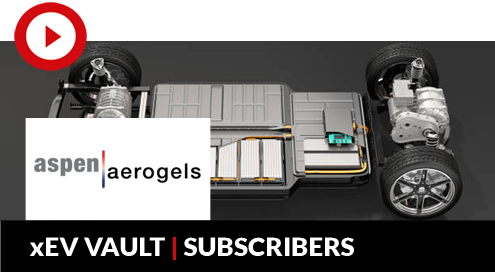
Don’t Just Delay Cell-to-Cell Thermal Propagation, Stop It

Liquid Cooling For EV Charging: How To Make Connections That Drive Performance & Reliability

Thermal Management & Bonding of Lithium Battery Cells & Modules

Thermal Conductive Adhesives For Next Generation Cell-to-Pack Configurations

Use Of Adiabatic Calorimetry In Battery Safety

Building Digital Twins Towards A Complete, Faster, Cost Effective & More Optimal Design Of Vehicles
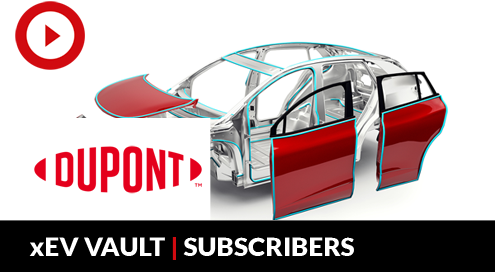
Thermal Management Optimization For The Future Of Battery Designs

Improve Process Efficiency Through Thermal Adhesive Simulation For Tool Path Optimization & Module Assembly
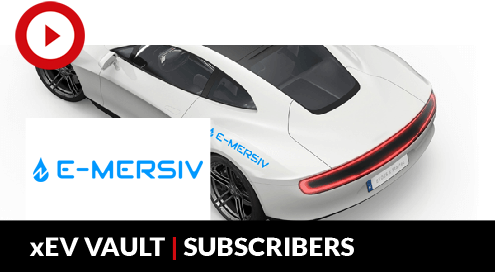
Battery Immersion Cooling: The Lightest And Safest Solution For EVs And HEVs

Engineering The Thermal & Safety Challenges In Next-Generation Battery Packs

Low Carbon Footprint Technologies For Automotive Acoustics And Battery Composites: The Key Enablers For Sustainable Mobility

The Basics Of UN 38.3 And The Requirements For The Transportation Of Lithium Batteries

Cell & Battery Abuse: Development Of Thermal Runaway / Propagation Tests For EV & Stationary Batteries

EVSE Charging And Safety Standards, Going Beyond Level 1 And 2
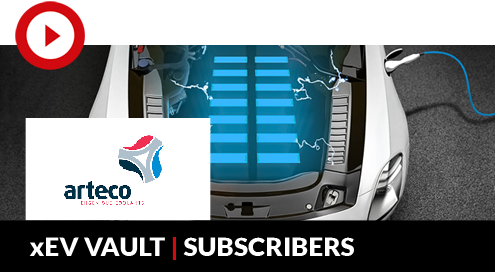
Future Of Water-Glycol Cooling In Electric Vehicles

Adhesive & Sealing Systems For High-Voltage Batteries In Electric Vehicle
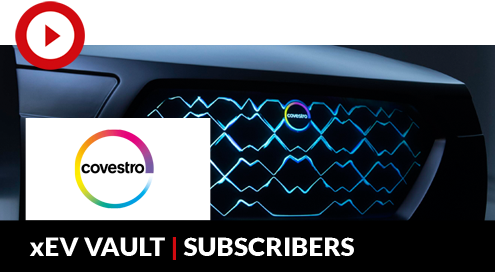
Material Solutions For Module Integration For Cylindrical Cells

Enabling Smarter Battery Pack Design & Assembly Processes With Innovative Adhesive, Sealant & Thermal Technologies

Innovative Thermal Interface Materials: How Adhesives And Sealants Are Accelerating xEV’s

Propagation Control Strategies And The Use Of Flexible Graphite Heat Spreaders

Full System Solutions To Enable Battery Pack Assemblies With Innovative Adhesive & Thermal Management Solutions

Overcoming Technical & Cost Challenges For Next Generation Automotive Batteries

Understanding The Thermal And Safety Challenges In Next-Generation Battery Packs
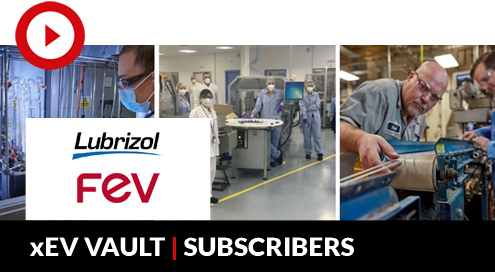
Why Immersed Battery Cooling

Monitoring Cell Temperature To Optimize Battery Performance And Design

Extending Battery Life of Electric Vehicle Fleets

Silicone Foams And Thermally Conductive Silicones In Battery Pack Assembly

Simulation To Aid Design: Accurately Predicting Thermal Performance And State Of Health Of A Battery Pack

Methodology For Modelling And Simulating Battery Thermal Runaway Events
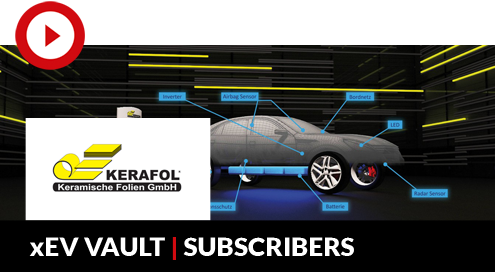
Thermal Interface Materials – Gap Filler Liquids For Battery Systems

Specifying Thermal Management Solutions For Battery Pack Design

Battery Thermal Comfort: A Multi-Component Approach

EV Battery Pack Design And Material Selection For High Performing Batteries
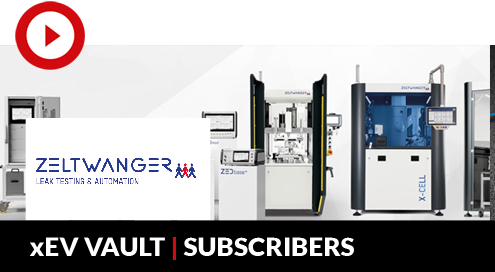
Improved Methods For Leak Testing Li-Ion Batteries

Three Innovative Material Solutions To Address Technical Challenges In Automotive Electrification

Battery Connection Solutions In e-Mobility: 3 Distinct Technologies For Battery Manufacturing

Solving A Burning Issue: Dealing With Thermal Runaway

Driving Toward The BEV Tipping Point: Solving cost And Scalability Challenges

Upscaling Processes For New Battery Raw Materials From Laboratory Into Industrial Production

Breakthrough Silicon Anodes For Next-Gen EV Batteries

Material Options For Insulating And Protecting Power Distribution And Cooling Components In The Battery

Making The Next Super-Battery Solid-State Batteries
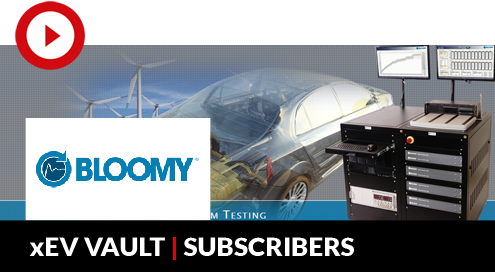
Efficient BMS Testing Throughout The BMS Development Lifecycle

Demystifying BMS Hardware-In-the-Loop (HIL) Testing

Methods For Leak Testing Lithium-ion Batteries

Thermal Propagation Prevention: Materials, Application, & Automation Techniques

How New Laser Technologies Can Help Advance Your Battery Manufacturing

Introducing Battery Intelligence: The Key To Powering Your Battery Program Through COVID-19 And Beyond

How To Advance Aluminum Laser Welding In Automotive Structures

EV Battery & Electrification Testing – From the Grid To The Road

Choosing The Right Scanner And Laser Solution In Battery Manufacturing

Using Clad Metal Innovations For Battery, Charging, And Thermal Management Challenges In Automotive Electrification

Powder Coating Solutions For Electric Vehicle Components

Innovative Solutions & Performance Materials For Lithium Ion Battery Packs

EV Battery Simulation, Accurately Predicting Performance & State Of Health

Upscaling Processes For New Battery Raw Materials From Laboratory Into Industrial Production

COVESTRO: New Ways To Manage Heat – Makrolon® TC

H.B. Fuller’s Innovative Materials For EV Batteries

Hybrid Electronic Control Technology For HV DC Switching

Battery Pack Material Selection & Design For Scaled Mass Production

Pressure Sensitive Adhesive (PSA) Applications In Li-ion Battery Assembly Processes

Laser Solutions For Demanding Battery Manufacturing Applications
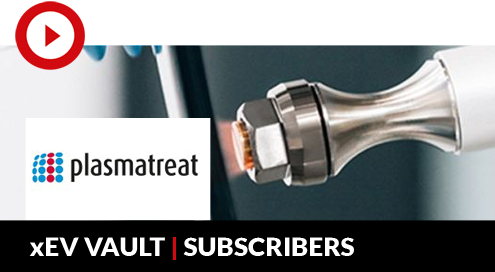
Increasing Thermal Transfer In EV Batteries Through The Use Of Openair-Plasma® Technology

Engineering The Thermal & Safety Challenges In Next-Generation Battery Packs

Testing Battery Sensitivities of EV Subsystems Using Battery Simulation And Hardware-In-the-Loop (HIL) Techniques

Technical Manufacturing Audits Of Cell Manufacturers

Translating FTRC Results Into Practical Thermal Analysis Techniques

Why Is The Ultra-Thin Heating Polyimide Film The Best Value Solution For Battery Warm Up?

Robust Early Detection Of Thermal Runaway (REDTR)

Sensor Optimization For Effective Thermal Management And HP/HX Control For xEV And Stationary Storage Batteries

Liquid Cooling For EVs – Cooling Strategies & Avoiding Issues For Reliable Fast Charging Electric Vehicles

Safer, Cooler, Faster, And Farther – Adhesives For Thermal Solutions In EV Battery Packs

Innovative Material Solutions To Address Electric Vehicle Safety & Thermal Management Challenges

Cell & Battery Abuse: Development Of Thermal Runaway/Propagation Tests For EV & Stationary Batteries

Thermal Propagation Control Strategies and the Use of Flexible Graphite Heat Spreaders

Staying Cool – Thermal Management When No Two Battery Packs Are The Same

EV Battery Design for Manufacturability: Process to Production

Temperature Counts: Increasing xEV Safety, Comfort, Range And Performance With NTC Sensors

Next Generation Silicone Solutions for xEV Battery Challenges

Integration Of The Battery Casing With The Cooling Plate, Enabled By A Coolant-Resistant Structural Adhesive

Innovations In Electric Vehicle Cooling Technologies

Sensor Design And Optimization For xEV, EVSE, And ESS Thermal Management
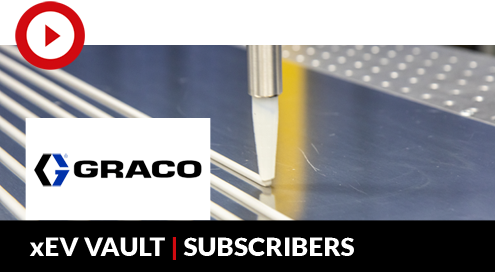
EV Battery Design for Manufacturability: Thermal Management Troubleshooting

How Adhesives Material Science Can Support Sustainability Goals For Automotive

Review Of Battery Cooler Brazing Development: Case Study
WeAutomotive Group delivers unique, high-value, content-lead technical agendas and networking forums for the Electric Vehicle Sector.



Chat: Set private and group panellist chat settings for attendees and panellists
Q&A And Polling: Manage and share audience input in Q&A dialog box where attendees ask questions, either live audibly or text answers
Attendee “Raise Hand”: Increase attendee engagement by allowing virtual hand-raising
Attention Indicator: Track how engaged your audience is with your content and which viewers show the most interest
![]()
HD Video And Audio
Multiple live video presenters and panellists can share their webcam and interact with the audience; If you’d prefer, you can remain unseen, or just post a profile picture.
![]()
Live Broadcasting
We can broadcast live across all social media channels including Facebook Live, YouTube and LinkedIn integrations.
![]()
Full Featured Host-Controls
Mute/unmute panellists, and promote attendee to panellist, giving them audio and video capabilities for enhanced engagement.
![]()
Reporting & Analytics
Get reports on registrants, attendees, polling, engagement levels and Q&A for follow up.
![]()
On-Demand Viewing
Host larger-scale events with help from our team, including planning, rehearsal and live support.












